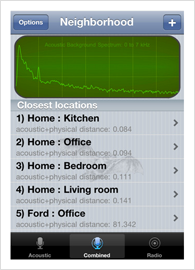Here’s what caught my attention in the payment space this week.
China’s AliPay develops barcode payment system
 China’s search engine giant, Alibaba, has launched a barcode-based mobile payment system for paying for real-world goods. Alibaba’s payment subsidiary, Alipay, isn’t waiting for near-field communications (NFC), and has developed an app on iOS, Android, and Nokia platforms. Similar to the well-known Starbucks app in the U.S., Alipay generates a unique barcode that merchants can scan with a barcode reader or their own smartphone camera. The system draw funds from a user’s credit card or a prepaid AliPay account.
China’s search engine giant, Alibaba, has launched a barcode-based mobile payment system for paying for real-world goods. Alibaba’s payment subsidiary, Alipay, isn’t waiting for near-field communications (NFC), and has developed an app on iOS, Android, and Nokia platforms. Similar to the well-known Starbucks app in the U.S., Alipay generates a unique barcode that merchants can scan with a barcode reader or their own smartphone camera. The system draw funds from a user’s credit card or a prepaid AliPay account.
Like everything in China, the opportunity is tremendous. There’s more than 420 million Internet users, including some portion that spent 400 billion yuan ($62 billion U.S.) online in the first quarter of 2010. Within this market, AliPay (which some U.S. readers may know as the subsidiary that was spun off from Alibaba without notifying key investors Yahoo and Softbank) held 45.5% of the market for online payments in China in 2010, followed by number two player Ten Pay. Earlier this year, AliPay announced that, having signed up 200 million users, it has more registered users than PayPal.
An acoustic footprint for hyperlocal navigation
 Researchers at the McCormick School of Engineering and Applied Science at Northwestern University have developed an app for recording an acoustic “fingerprint” of a room to see if this method can be used for indoor navigation. Stephen Tarzia, a computer engineering graduate student, developed the app — called Batphone — as a proof of concept. It records the ambient sounds in a room (air systems, computers, lights, appliances), filters out transitory sounds (like people talking), analyzes how the sounds are distributed, and creates a fingerprint. A release from McCormick says the current app is just a proof of concept, but that acoustic fingerprints could be used in the future to assist in check-ins or other hyperlocal apps in situations where GPS tracking is unavailable.
Researchers at the McCormick School of Engineering and Applied Science at Northwestern University have developed an app for recording an acoustic “fingerprint” of a room to see if this method can be used for indoor navigation. Stephen Tarzia, a computer engineering graduate student, developed the app — called Batphone — as a proof of concept. It records the ambient sounds in a room (air systems, computers, lights, appliances), filters out transitory sounds (like people talking), analyzes how the sounds are distributed, and creates a fingerprint. A release from McCormick says the current app is just a proof of concept, but that acoustic fingerprints could be used in the future to assist in check-ins or other hyperlocal apps in situations where GPS tracking is unavailable.
Juniper report: $670 billion in mCommerce in 2015
Digital goods like music, subscriptions, and gaming will continue to make up the largest part of mobile commerce over the next four years, but the growth rate in non-digital physical goods will rise much faster, according to a new report from Juniper Research. The report says that rising sales in physical goods, fueled in part by the advent of NFC technology that will let consumers pay for goods and services by tapping a reader at the cash register, will help spur “mCommerce” from $240 billion this year to $670 billion by 2015.
Got news?
News tips and suggestions are always welcome, so please send them along.
If you’re interested in learning more about the payment development space, check out PayPal X DevZone, a collaboration between O’Reilly and PayPal.
Related:
